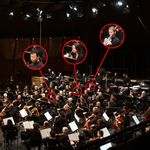Every summer, the major cities across Canada play host to a series of Fringe theater festivals. As an American sketch comedian working in obscure black box venues across the Pacific Northwest, I had never heard of the Canadian Fringe Circuit until a fellow sketch comedian, Andrew Connor of the Cody Rivers Show, extolled the fests’ virtues during a panel discussion at the 2008 Seattle Sketchfest. The Fringe, Andrew explained, is a whole other world: a place for comedians to hone their craft, to network with likeminded folk, to get some (hopefully) usable pull-quotes from honest-to-God newspaper reviews, to be inspired by the inventiveness and creativity of other performers, and to make a little money.
Artists pay a fee (usually between $500 and $700 CAD), guaranteeing them a stage, a technician (depending on the city), listings in all official Fringe promotional materials, and between five and seven performances (again, depending on the city). In exchange, artists are entitled to — and here’s what sets the Fringe apart from other comedy or theater fests — 100% of box office revenue. (You can thank strong government support of the arts for that.) Festival slots are decided by lottery rather than jury, guaranteeing an eclectic mix of material both in terms of genre and quality; it would be in no way surprising to see a professional off-Broadway theater company, a Calgary high-school improv troupe, and a perplexing performance art show featuring no fewer than three mayonnaise enemas, back to back to back at the same venue. It is in this way not dissimilar from larger arts fests, like Edinburgh’s Fringe, except the Canadian fests supply much of the backbone in terms of venue and centralized ticket sales, and the limited spaces selected by lottery keep the overall schedule more manageable. Still, while the variety is tremendous, amongst the angsty one-man shows, modern dance performances, and overtly political works, emerges one of the coolest comedy scenes on the planet.
World-class sketch and improv are staples at the Canadian Fringe, as are unique genre-bending performances you’d never see at a comedy club. Among them at recent Fringes, Stacey Hallal of Portland’s brilliant Ruby Rocket PI is a kind of half-improvised noir satire; (De)Tour a show from San Francisco “physical comedy troupe” Pi falls somewhere between Mitchell & Webb and Cirque du Soleil; and both You Killed Hamlet and Red Bastard from Naked Empire Bouffon Company and Eric Davis, respectively, are “clown” shows that explode the very notion of comedy (I wish I could be more specific about those last two, but their transcendence largely defies explanation). There are also, of course, a bevy of more traditional comedy acts, like Winnipeg sketch group Hot Thespian Action, or Vancouver long-form improv duo Hip.Bang!, but the variety of shows is enough to keep a comedy nerd entertained for weeks at a time, while the premium the Fringe places on innovation challenges audiences and keeps them thinking. And significantly, over the course of the festival, the burgeoning comedy scene becomes something beyond the sum of its parts. Performers gather together, actively supporting and hawking for like-minded shows, and since the beer tents and bars typically give deep performer discounts, every night turns into a veritable comedic symposium. What has and hasn’t worked, what’s inspired folks to step up their games, what’s the worst show you’ve ever had and what did you learn from it, how do you get better – all regular topics of conversation discussed with earnestness over uncountable pints of comparably strong Canadian suds. Performers and fans intermingle in these conversations, as accessibility feels paramount, if only because the fest represents something of a comedy diaspora.
Interestingly, the Fringe seems to have little interest in standup comedy. This is perplexing, as one-person “storytelling” shows consistently turn out willing patrons, as do standup shows masquerading as single-character monologues. Alexa Fitzpatrick, a seasoned comic from Colorado whose very funny standup show Serving Bait to Rich People saw lackluster crowds despite good reviews and strong word of mouth, proffered a theory as to why standup receives such apparent acrimony at the Fringe. According to her, an hour of standup from one person is just too long unless that person happens to have a recognizable name. Alexa believes people are more than willing to check out a one-hour show, but feels there has to be something unique about it to engage interest. A plot, or the semblance of a plot, or even a character gimmick, is enough to get people on board from the get-go. Otherwise, unless you’re famous, it’s hard to hook people with an hour of straightforward standup marketed as such.
Alexa’s hypothesis rings true in many ways; this is, after all, a theater festival, so audiences are expecting to see something closer on the spectrum to performance art than the conversational style typical of standup comedy, but her comment about notoriety is interesting as well. One would not suspect a series of independent, artistically-minded theater festivals taking place across Canada to breed celebrity, but they have. Rob Gee, The Wonderheads, Jem Rolls, The Cody Rivers Show, Jonno Katz, Peter ‘N Chris; most Americans have never heard of these folks, but north of the border, for two weeks at a time from Montreal to Victoria, they might as well be Robin Williams. Rob Gee is so popular his entire run sometimes sells out before he arrives at a festival, Peter ‘N Chris see their audiences snake around the block waiting for admission, often in torrential downpours with no awnings or umbrellas; and the Cody Rivers Show nearly receive a standing ovation if a performer from a different show so much as mentions their name during her curtain call by way of a thank you. By bringing consistently fantastic comedy shows to the Fringe year after, and by virtue of the fiscal structure of the fest, acts like these have been able to accomplish the miraculous feat of making a living from comedy.
Because the economic structure of the Fringe makes it one of the few places artists can reliably earn legitimate money to support their careers, Fringe performers are highly incentivized to turn people out, from which arises yet another interesting quirk: when not performing, artists spend the majority of their time marketing the shit out of their shows. As smarmy as it sounds, this is a major part of the fest and ends up being a boon both for performers and audience. A type of curation takes place where artists, having limited time and hand bills to distribute, target specifically the crowds of shows they feel share a sensibility with their own, and with so many shows to navigate, it’s often in most patrons’ best interest to hear these folks out. The easiest way to learn about improv at the fest is to get in line for a random improv show and let the comedians come to you. This year, while in Winnipeg promoting our show Moby Alpha, my writing partner and I learned of a local, long-standing, tremendously popular Dungeons and Dragons improv show. We guessed that the kind of audience that enjoys D&D improv might also be interested in a science fiction parody of Moby-Dick, set in space. We guessed right, and some of the best conversations we had during our tour were with the very people to whom we were functionally pimping our show. Performers unwilling to chat up potential patrons do so at the risk of massive obscurity, as happened to us when, in 2010 (our first year performing at a Fringe Festival) after doing almost no marketing, we did a show to an audience consisting of one blind man… and no one else. I should say he was a phenomenal audience member, but no one should have to perform to an audience smaller than their company, especially when that company is only two people. The quick lesson was: if you can find people who might be genuinely interested in what you’re working on, it is easy to get them to come to your show if you simply tell them about it. This, I have found, applies outside the Fringe as well.
There is, of course, something decidedly Canadian about all this: a tremendously open and supportive artistic community that remains firmly capitalist, an easy intermingling between artist and performer, pervasive government involvement, and a compulsory support of the arts by cities otherwise known exclusively for their hockey prowess (Toronto exempted). While there are a few Fringe festivals in the US, they are, for the most part, unknown and sparsely attended when compared to their Canadian counterparts. Case in point, I lived in San Francisco for three years working as a sketch comedy writer, and yet did not know until recently that the San Francisco Fringe Fest exists. One gets the sense that were the Fringe to take hold in America, it would immediately be grafted onto a corporate sponsor, the lottery-based allocation would fall by the wayside in favor of promoting specific talent, the box-office money would not go directly to the artists, and the general weirdness would dither. Don’t get me wrong, this isn’t a knock against the US — I hate a king as much as the next guy, and the caliber of talent that flocks to the American entertainment industry is simply unparalleled both globally and historically — but in the construction of our comedy industrial complex, we’ve created a divide between artist and audience. We run our art through filters, through sponsors, through producers, through marketers. And while one gets the sense that a tremendously weird theatrical comedy show might do well in a one off performance in Boulder, Austin, or Portland, it’s unlikely it could succeed on a sustained tour without thousands of dollars in marketing behind it. And that is too bad. The Canadian Fringe Festivals do a lot to tear down the layers that have formed by virtue of the entertainment business, and the comedy world is a much, much better place as a result.
Photo via Flickr
Charles Armstrong is a comedy writer frequently bouncing between Seattle, Los Angeles, and San Francisco. He is one half of Seattle sketch comedy duo Charles and a former contributing writer to The Onion.




